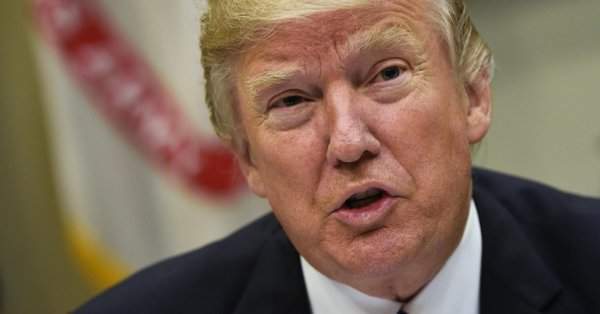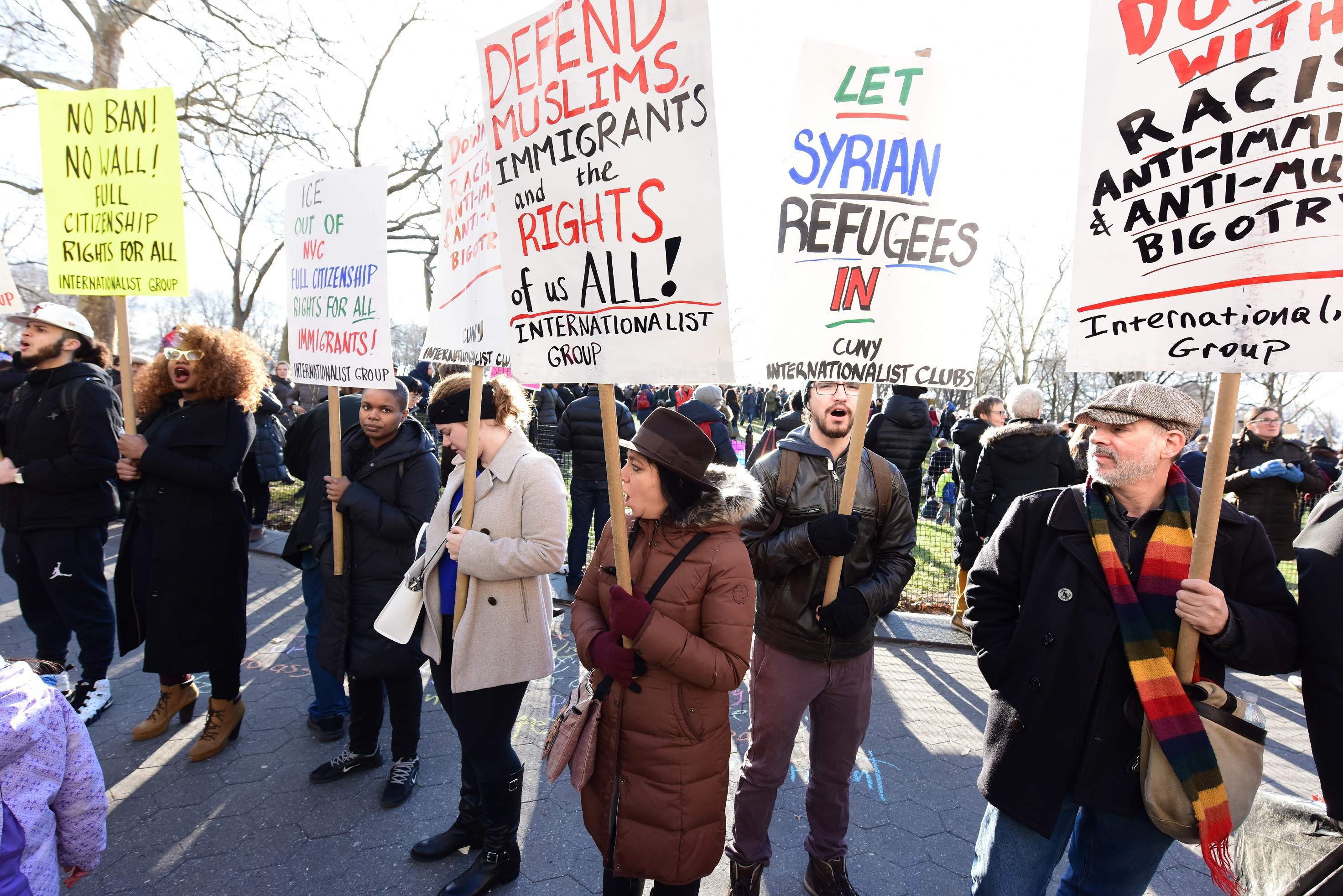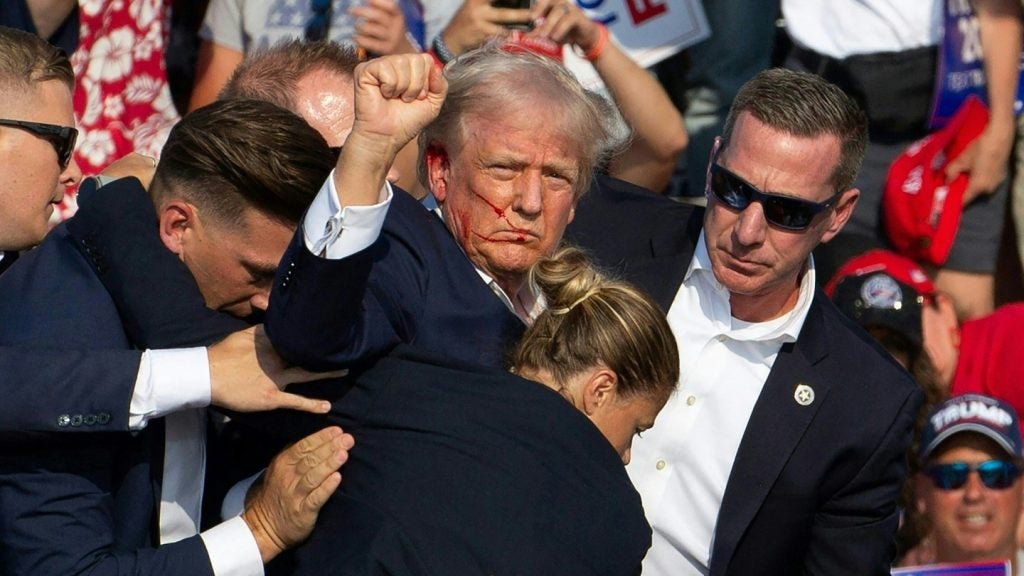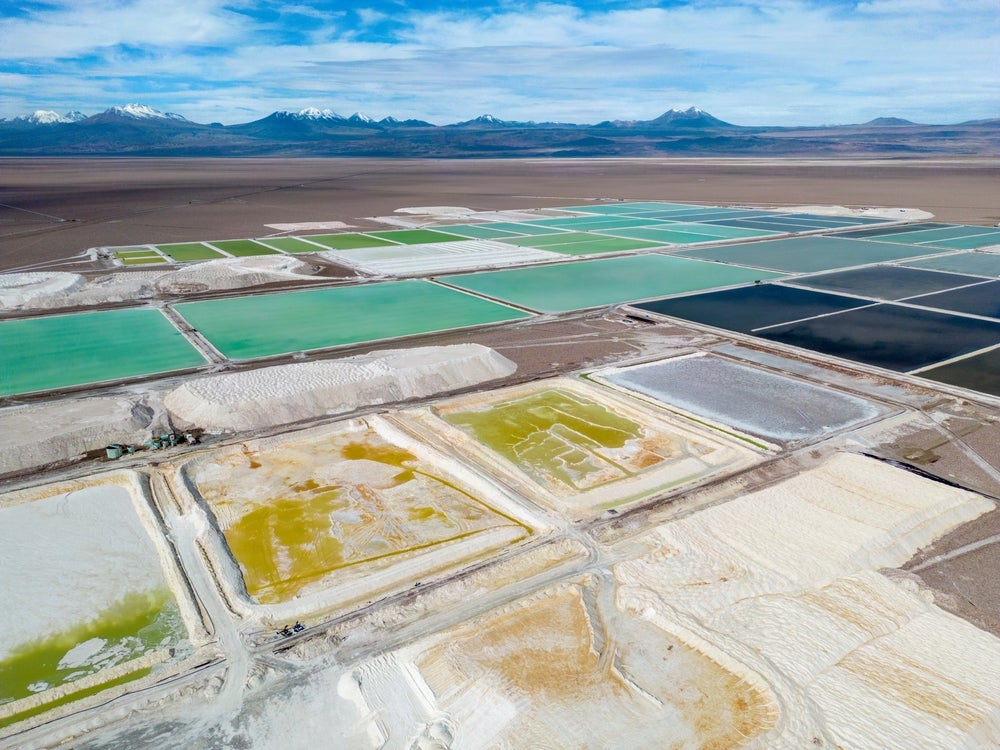
US president Donald Trump’s controversial travel ban has come into effect, meaning people from six mainly Muslim countries and all refugees now face a tougher ride getting into the US.
People travelling from Sudan, Somalia, Iran, Yemen, Syria and Libya without close family or business relationships in the US could be denied visas and barred entry.
Earlier this week the US Supreme Court allowed the Trump administration to enforce its travel ban, whilst it reviews the case.
The highest court in the country has overturned the lower court orders that blocked the initial ban, which aimed to prevent residents from Muslim-majority countries from travelling to the US, was set to take effect on 16 March.
The justices will hear arguments in the case from October, according to the Associated Press.
Forgot what the travel ban was even about? Here’s everything that’s happened so far.
How well do you really know your competitors?
Access the most comprehensive Company Profiles on the market, powered by GlobalData. Save hours of research. Gain competitive edge.

Thank you!
Your download email will arrive shortly
Not ready to buy yet? Download a free sample
We are confident about the unique quality of our Company Profiles. However, we want you to make the most beneficial decision for your business, so we offer a free sample that you can download by submitting the below form
By GlobalDataHow is it different to Trump’s first travel ban?
The first executive order banned travel from seven Muslim-majority countries: Iran, Iraq, Libya, Somalia, Sudan, Syria and Yemen, for 90 days.
Nationals from those countries travelling to the US were unable to board planes or enter the country, including travellers who have dual-nationality.
It was also set to prevent refugees from coming into the US for a period of 120 days and prohibited Syrian refugees indefinitely.
Despite criticisms from the tech community and several states, Trump defended the ban as a national security measure that would guard against terrorists entering the US.
UK asylum barrister, Colin Yeo, told Verdict that this type of travel ban wasn’t technically legal.
The way that it [the travel ban] was enacted in the US was extremely objectionable. Legal supervision was noticeably absent.There was no notice given.
People were literally denied entry when they landed in the US, those who had tickets and were at airports were suddenly told — after months of vetting — that they won’t be able to travel to the US.”
The ban was later stopped and overturned by federal judges.
It was also set to prevent refugees from coming into the US for a period of 120 days and prohibited Syrian refugees indefinitely.
How will the new ban work?
Instead of targeting seven countries, Iraq was removed from the list of states.
Rex Tillerson, US secretary of state, said this was because “Iraq is an important ally in the fight to defeat Isis.”
In addition, it included exemptions for lawful permanent residents, so those with dual-citizenship that were affected by the first order.
Syrian refugees are no longer permanently banned from the US but it also maintained a 50,000 annual cap on the US’s refugee intake, more than half president Obama’s pledge to resettle 110,000 refugees this year.
As well as this, the order said the original direction “was not motivated by animus towards any religion”, echoing Trump’s protestations that it was not a Muslim travel ban, despite targeting Muslim-majority countries.

What has been the reaction so far?
Unsurprisingly, Republicans supported the new travel ban
South Carolina senator Lindsey Graham told reporters: “I think it’s going to stand legal scrutiny [and] it will make the country safer. It is prospective in application, it’s clearly not a Muslim ban, awful visa-holders’ visas will be honoured.”
Outside of the Republican party, however, reactions has been less than complimentary.
The United Nations high commissioner for refugees, Filippo Grandi, said the ban will increase the woes of the world’s refugees.
“Americans have long played a crucial role in promoting global stability while simultaneously exemplifying the highest humanitarian ideals, from support for refugee emergencies overseas, to welcoming some of the most vulnerable refugee families in the United States to rebuild their lives in safety, freedom and dignity.
“This is the gold standard in refugee protection and a powerful model for all countries that, at a time of record-high levels of forced human displacement, this kind of humane leadership is needed more than ever.”
Hawaii became the first state to sue over the new ban. The state’s attorney general, Douglas Chin, said:
There is the same blanket ban on entry from Muslim-majority countries (minus one) and the same sweeping shutdown of refugee admissions (absent one exception) and lawless warren of exceptions and waivers.”
Interestingly enough, Silicon Valley’s tech companies have been silent over criticising the new ban. When the first executive order came into effect, many companies including Apple, Microsoft and Airbnb joined together to protest the ban and even supported court cases against it.
However, Apple, Google and Facebook are amongst the companies that appear to have backed away from the second legal fight.
According to Reuters, Uber was in the process of adding its name to a legal challenge against the second ban whereas companies such as Twitter and Facebook declined to comment on the second order.
Why has the ban been frozen?
On the eve of the new ban coming into effect, three different court hearings took place across the US as several states, and the American Civil Liberties Union (ACLU), chose to challenge the ban.
Derrick Watson, a judge in the District of Hawaii, issued the first temporary restraining order to freeze the travel ban. The order hit just a few hours from the ban was supposed to come into effect.
In the ruling, Watson said the government didn’t make a convincing enough case that the new order did not discriminate against Muslims. In addition, he said there would be “irreparable injury” if he didn’t prevent the order from coming into effect.
Since this, Watson has issued a longer-lasting hold on the travel ban. This means the temporary order has been extended until the state’s lawsuit is resolved, as a measure to ensure the constitutional rights of Muslim citizens across the US are vindicated, according to the state.
Trump has called out Watson for stopping the ban, saying it was an “unprecedented judicial overreach” during a rally in Tennessee.
He said the ruling “makes us look weak”, before asking the crowd at the rally if they thought the judge blocking the order for “political reasons”.
The president has said he will fight this all the way to the Supreme Court.
“We’re going to win. The danger is clear. The law is clear. The need for my executive order is clear,” said Trump.
Hours later, a second federal judge in Maryland temporarily blocked parts of the revised order, giving another blow to the administration’s immigration plans.
Democratic senator Elizabeth Warren called Trump out on Twitter to stop fighting the law and instead “start fighting for all Americans”.
.@realDonaldTrump, your Muslim ban is now 0 for 2 vs the Constitution. Stop fighting the rule of law and start fighting for all Americans.
— Elizabeth Warren (@SenWarren) March 16, 2017
The Republicans are fighting for the ban
In March, 12 attorney generals and one governor from 13 Republican-led states filed an amicus brief to support the travel ban as it goes to a federal appeals court.
The brief said the courts are infringing on Trump’s constitutional ability to make national security decisions. It says:
“The district court’s ruling is thus an intrusion into the national-security, foreign affairs, and immigration powers possessed by the Executive and delegated by Congress. … It threatens amici’s interests by denying the federal government—under a statutory regime crafted by the States’ elected representatives in Congress—the latitude necessary to make policy judgments inherent in this country’s nature as a sovereign.”
Virginia appeals court upheld the ban on the executive order
Earlier on in May, a full bench of a federal appeals court in Richmond, Virginia, considered the legality of the revised travel ban. All 15 judges at the Fourth Circuit Court released their thoughts yesterday, choosing to uphold the block on the ban.
In the majority opinion, chief judge Roger Gregory wrote that although the president is granted broad powers by Congress to deny entry to foreign visitors, “that power is not absolute.”
“It cannot go unchecked when, as here, the president weilds it through an executive edict that stands to cause irreperable harm to individuals across this nation,” he wrote.
In addition, the judges said they were unconvinced that the purpose of the ban was to maintain national security and instead it was done to implement Trump’s election campaign promise to prevent Muslims from entering the US.
Why did the Supreme Court allow the administration to enforce the ban?
After fighting the various blocks against the ban, the Trump administration took its fight to the Supreme Court.
Speaking after the 4th US Circuit Court of Appeals in Virginia in May, attorney general Jeff Sessions said in a statement:
“The Department of Justice strongly disagrees with the decision of the divided court, which blocks the president’s efforts to strengthen this country’s national security. The president is not required to admit people from countries that sponsor or shelter terrorism, until he determines that they can be properly vetted and do not pose a security risk to the US.”
The Supreme Court ruled today, 26 June, that it is allowing the Trump administration to enforce its 90-day ban, effectively overturning all the lower court orders from the likes of Hawaii and Virginia that blocked it.
However, it is partially ready to go ahead in 72 hours. The travel ban will be enforced for people without a US relationship – so students, anyone with a job to go to in the US and anyone with family in the country, are allowed to travel. This means it’s not a blanket ban like the one Trump tried to install in January which led to chaos in airports.
The time period of the ban is 90 days. This means if it comes into force on 29 June, it will be in place until the end of September, which brings us almost to October when the eight justices of the court will start hearing arguments for and against the ban.
BREAKING: #SCOTUS to take up Trump’s Muslim ban.
We’ll see him in court. #NoMuslimBanEVER
— ACLU National (@ACLU) June 26, 2017
Trump’s travel ban saga is far from over.







